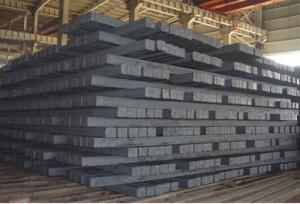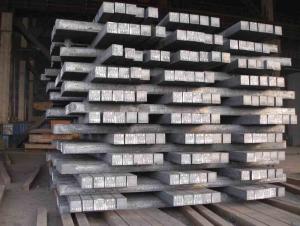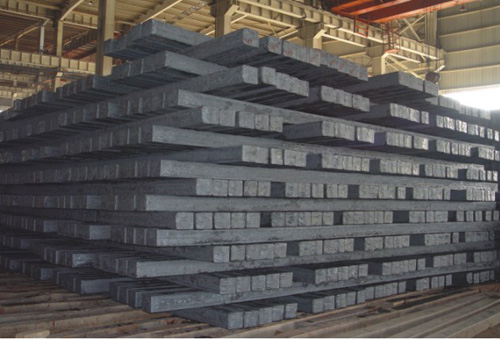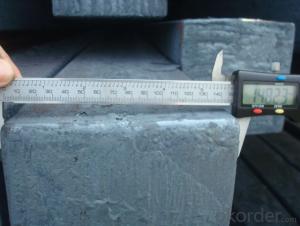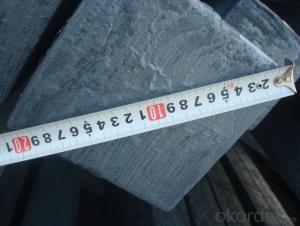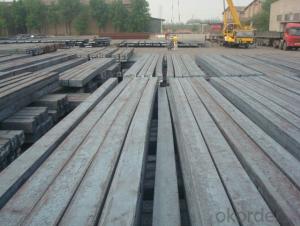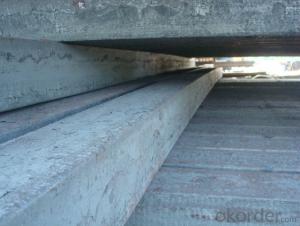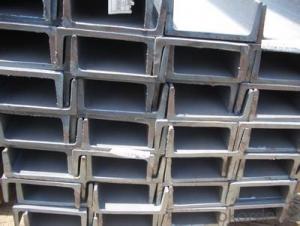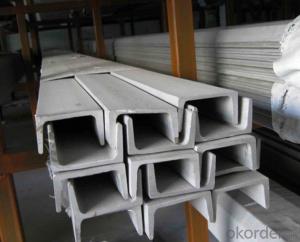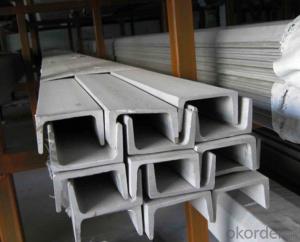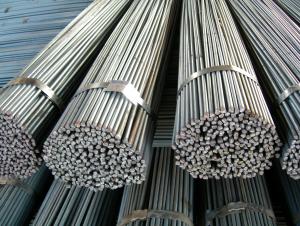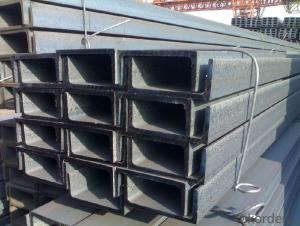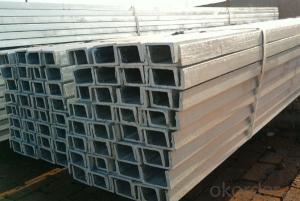JIS U Channel 50-300MM Hot Rolled EN10025JR High Quality
- Loading Port:
- Shanghai
- Payment Terms:
- TT or LC
- Min Order Qty:
- 25 m.t.
- Supply Capability:
- 20000 m.t./month
OKorder Service Pledge
OKorder Financial Service
You Might Also Like
Product Description:
OKorder is offering high quality Hot Rolled Steel I-Beams at great prices with worldwide shipping. Our supplier is a world-class manufacturer of steel, with our products utilized the world over. OKorder annually supplies products to European, North American and Asian markets. We provide quotations within 24 hours of receiving an inquiry and guarantee competitive prices.
Product Applications:
According to the needs of different structures, Angle can compose to different force support component, and also can be the connections between components. It is widely used in various building structures and engineering structures such as roof beams, bridges, transmission towers, hoisting machinery and transport machinery, ships, industrial furnaces, reaction tower, container frame and warehouse etc
Product Advantages:
OKorder's Steel I-Beams are durable, strong, and resist corrosion.
Main Product Features:
· Premium quality
· Prompt delivery & seaworthy packing (30 days after receiving deposit)
· Corrosion resistance
· Can be recycled and reused
· Mill test certification
· Professional Service
· Competitive pricing
Product Specifications:
Manufacture: Hot rolled
Grade: Q195 – 235
Certificates: ISO, SGS, BV, CIQ
Length: 6m – 12m, as per customer request
Packaging: Export packing, nude packing, bundled
Sizes: 25mm-250mm | ||||||||||||
a*t | ||||||||||||
25*2.5-4.0 | 70*6.0-9.0 | 130*9.0-15 | ||||||||||
30*2.5-6.6 | 75*6.0-9.0 | 140*10-14 | ||||||||||
36*3.0-5.0 | 80*5.0-10 | 150*10-20 | ||||||||||
38*2.3-6.0 | 90*7.0-10 | 160*10-16 | ||||||||||
40*3.0-5.0 | 100*6.0-12 | 175*12-15 | ||||||||||
45*4.0-6.0 | 110*8.0-10 | 180*12-18 | ||||||||||
50*4.0-6.0 | 120*6.0-15 | 200*14-25 | ||||||||||
60*4.0-8.0 | 125*8.0-14 | 250*25 | ||||||||||
FAQ:
Q1: Why buy Materials & Equipment from OKorder.com?
A1: All products offered byOKorder.com are carefully selected from China's most reliable manufacturing enterprises. Through its ISO certifications, OKorder.com adheres to the highest standards and a commitment to supply chain safety and customer satisfaction.
Q2: How do we guarantee the quality of our products?
A2: We have established an advanced quality management system which conducts strict quality tests at every step, from raw materials to the final product. At the same time, we provide extensive follow-up service assurances as required.
Q3: How soon can we receive the product after purchase?
A3: Within three days of placing an order, we will begin production. The specific shipping date is dependent upon international and government factors, but is typically 7 to 10 workdays.
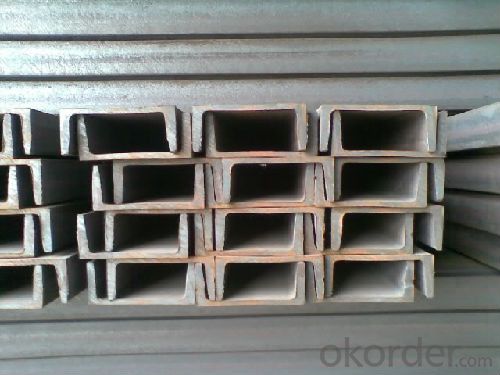
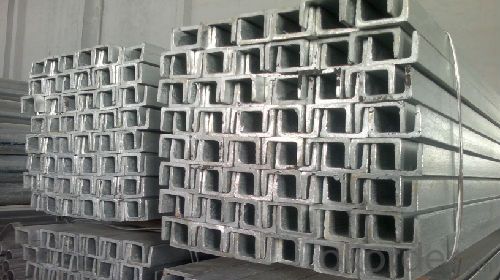
- Q: What are the causes of internal cracks in continuous casting billet?
- The test according to the process of the sample for cooling, in order to study the effects of the three elements of the internal crack of continuous casting billet hot.
- Q: How are steel billets used in the manufacturing of storage tanks?
- Steel billets are used in the manufacturing of storage tanks as a primary raw material. These billets, which are semi-finished metal forms, serve as the starting point for the production of steel plates or sheets that are then used to construct the tank walls and base. Once the steel billets are obtained, they are heated and then passed through a series of rollers to gradually shape them into the desired form. This process, known as hot rolling, helps to create the necessary thickness and dimensions required for the storage tank. After the hot rolling process, the steel billets are further processed to remove any surface impurities or imperfections through a technique called descaling. This helps to ensure the quality and durability of the final tank structure. The steel billets are then cut into smaller pieces, known as plates or sheets, which are then formed and welded together to create the tank shell. These plates are typically cut and shaped according to specific engineering drawings and designs, ensuring that the tank meets the required specifications for strength, capacity, and structural integrity. In addition to the tank shell, steel billets are also used to manufacture the tank's base or floor. The billets are processed and formed into the required shape, which is then welded or bolted to the tank shell to provide a solid foundation for the storage tank. Overall, steel billets play a crucial role in the manufacturing of storage tanks by providing the necessary raw material from which the tank structure is built. Through various processes, the billets are transformed into steel plates and sheets, which are then formed into the tank shell and base, ensuring the tank's strength and durability.
- Q: Can steel billets be used for making furniture?
- Yes, steel billets can be used for making furniture. Steel billets can be shaped and molded into various furniture components such as frames, legs, supports, and decorative elements. The strength and durability of steel make it a suitable material for furniture that requires stability and longevity. Additionally, steel can be finished with different coatings or finishes to enhance its aesthetic appeal.
- Q: How are steel billets used in the manufacturing of furniture and fixtures?
- Steel billets are an essential component in the manufacturing of furniture and fixtures due to their versatility and durability. These billets, which are semi-finished metal products, serve as the raw material for creating various components of furniture and fixtures. One common use of steel billets in furniture manufacturing is for creating frames and structural supports. The billets are shaped and cut into specific dimensions to form the framework of chairs, tables, and other pieces of furniture. The strength and rigidity of steel make it a preferred choice for ensuring the stability and longevity of these products. In addition to frames, steel billets are used for producing hardware components of furniture and fixtures. This includes hinges, locks, drawer slides, and other mechanisms that require strength and precision. By using steel billets, manufacturers can ensure that these components can withstand the wear and tear associated with daily use. Steel billets are also utilized in the production of decorative elements in furniture and fixtures. They can be molded, bent, or welded into various shapes and designs to add aesthetic appeal to the final product. These decorative elements may include trimmings, accents, or ornamental details that enhance the overall appearance of furniture and fixtures. Furthermore, steel billets are often used in the manufacturing of fixtures such as shelving units, display racks, and storage systems. The durability and load-bearing capacity of steel make it an ideal material for constructing these items, ensuring that they can withstand heavy loads and provide long-term support. In summary, steel billets play a crucial role in the manufacturing of furniture and fixtures. They are used to create frames, hardware components, decorative elements, and various types of fixtures. Their strength, durability, and versatility make them an essential raw material for producing high-quality and long-lasting furniture and fixtures.
- Q: How are steel billets used in the production of construction components?
- Steel billets are an intermediate product used in the production of construction components. They are typically heated and then shaped into various forms such as beams, columns, or rods, which are essential for constructing buildings, bridges, and other structures.
- Q: How to calculate the cost price of billet?
- That depends on what kind of material you are producing steel billet, and are generally the city's iron ore came.
- Q: How are steel billets used in the manufacturing of hydraulic components?
- Hydraulic components rely heavily on steel billets as a crucial raw material for their production. Billets, which are essentially semi-finished steel forms, are typically rectangular or square in shape. They undergo further processing to become various hydraulic components like cylinders, pistons, valves, and fittings. The manufacturing process begins by carefully selecting high-quality steel billets that meet specific mechanical and chemical requirements. These billets are then heated to a specific temperature, making them more malleable and easier to shape. Once heated, the billets undergo a series of mechanical processes such as forging, extrusion, or rolling to achieve the desired shape and size. For instance, in the production of hydraulic cylinders, the heated billets are usually forged or extruded to form the cylinder body. This involves applying high pressure to the billet, causing it to deform and take on a cylindrical shape. The resulting cylinder body is then further machined to precise tolerances to accommodate internal components like pistons, seals, and valves. Similarly, hydraulic valves and fittings are also manufactured using steel billets. The billets undergo various machining techniques such as turning, milling, drilling, and grinding to create intricate shapes and features required for these components. The final products are then subjected to heat treatment or surface treatment to enhance their strength, durability, and corrosion resistance. Steel billets are preferred in the manufacturing of hydraulic components due to their exceptional mechanical properties, including high strength, good ductility, and weldability. These properties ensure that the components can withstand the high pressures, extreme temperatures, and harsh operating conditions commonly experienced in hydraulic systems. In conclusion, steel billets play a vital role in the manufacturing process of hydraulic components. They undergo various mechanical processes to achieve the necessary shapes and sizes needed for cylinders, pistons, valves, and fittings. The use of steel billets guarantees the production of high-quality and reliable hydraulic components that can effectively function in demanding hydraulic systems.
- Q: What are the different types of steel billet rolling techniques?
- There are several different types of steel billet rolling techniques, including hot rolling, cold rolling, and continuous casting.
- Q: What are the main factors affecting the thermal expansion of steel billets?
- The main factors affecting the thermal expansion of steel billets include temperature, composition of the steel, and the grain structure of the material.
- Q: What are the different types of steel billets used in the aerospace industry?
- In the aerospace industry, various types of steel billets are used, including stainless steel, tool steel, and high-strength alloy steel. These types of steel are chosen for their specific properties, such as corrosion resistance, high temperature strength, and superior mechanical properties.
Send your message to us
JIS U Channel 50-300MM Hot Rolled EN10025JR High Quality
- Loading Port:
- Shanghai
- Payment Terms:
- TT or LC
- Min Order Qty:
- 25 m.t.
- Supply Capability:
- 20000 m.t./month
OKorder Service Pledge
OKorder Financial Service
Similar products
Hot products
Hot Searches
Related keywords
